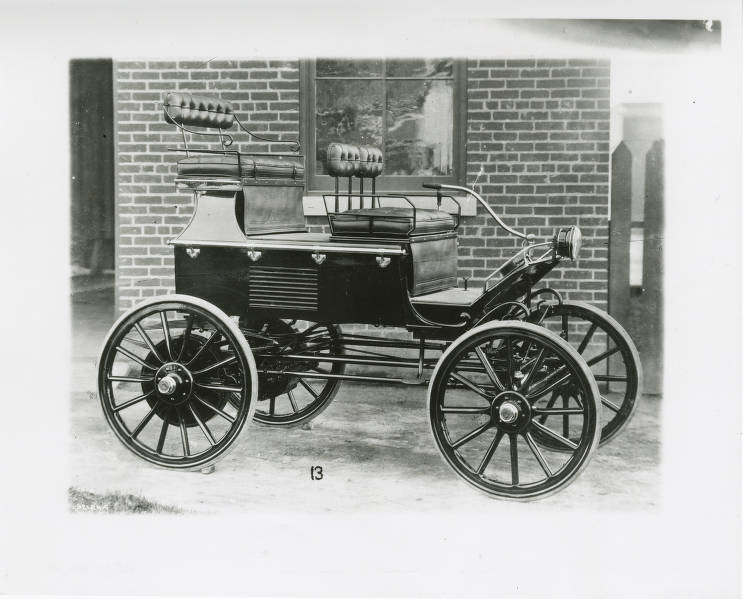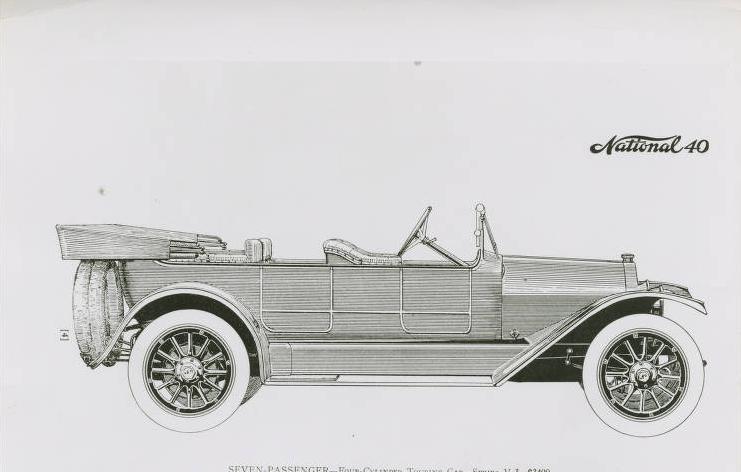The National Automobile and Electric Company was founded in Indianapolis (1900) by L. S. Dow and Philip Goetz. Until 1902, the company produced electric vehicles as well as horse-drawn carriages. The company reorganized as the National Vehicle Company after the sale of the carriage manufacturing operation to the Gates-Osborne Carriage Company of Indianapolis. In 1904, the company, renamed the National Motor Vehicle Company, introduced a gasoline-powered vehicle. By then, except for a commercial model, production had ceased on electric passenger vehicles.

, a promoter of six-day bicycle races in Indianapolis, joined the firm as a director and eventually became president of the factory located at 1105 East 22nd Street, along the . In 1906, National introduced one of the nation’s first 6-cylinder automobiles.
Later, upon completion of the in 1909 (Newby was a founding partner), the National did quite well, winning the second in 1912. The vehicle was not altered to run the race, making it the only time that a stock car has won the event. Before World War I, National was successful in other road and speedway races, hill climbs, and dirt track races, winning a total of 84 times, coming in second 48 times and third 30 times.

After 1912, the company produced 4-and 6-cylinder cars, with a 12-cylinder model added in 1915. Prices of the models that the company produced at this time ranged from $2,375 to $4,800 (about $65,500 to $133,000 in 2021). Illness forced Newby to relinquish control of the company to G. M. Dickinson in 1916.
In the early 1920s, the firm produced 6-cylinder cars only. A merger with Jackson, Michigan, and Louisville, Kentucky, firms, ca. 1922-1923, resulted in the Associated Motor Industries, with Clarence A. Earl in charge. Automobiles continued to be produced under the National name only, but the company closed in 1924. National produced a total of only 23,558 vehicles over the course of its history, making the vehicles that survive highly collectible.
The Weymann American Body Company took over the National factory complex in 1926. The company was known for its quiet, lightweight automobile bodies. Luxury cars of the 1920 and 1930s, such as , Cord, Packard, Pierce-Arrow, and , used Weymann bodies until they closed in 1934.
The National factory has been used for a variety of industrial purposes. In 2008, part of the building became the Project School, a K-8 charter school. The school, however, did not survive because of poor performance. It closed at the end of the 2012 school year. Two apartment buildings next door to the facility have taken the National name and have reappropriated the company logo for the complex.

Help improve this entry
Contribute information, offer corrections, suggest images.
You can also recommend new entries related to this topic.